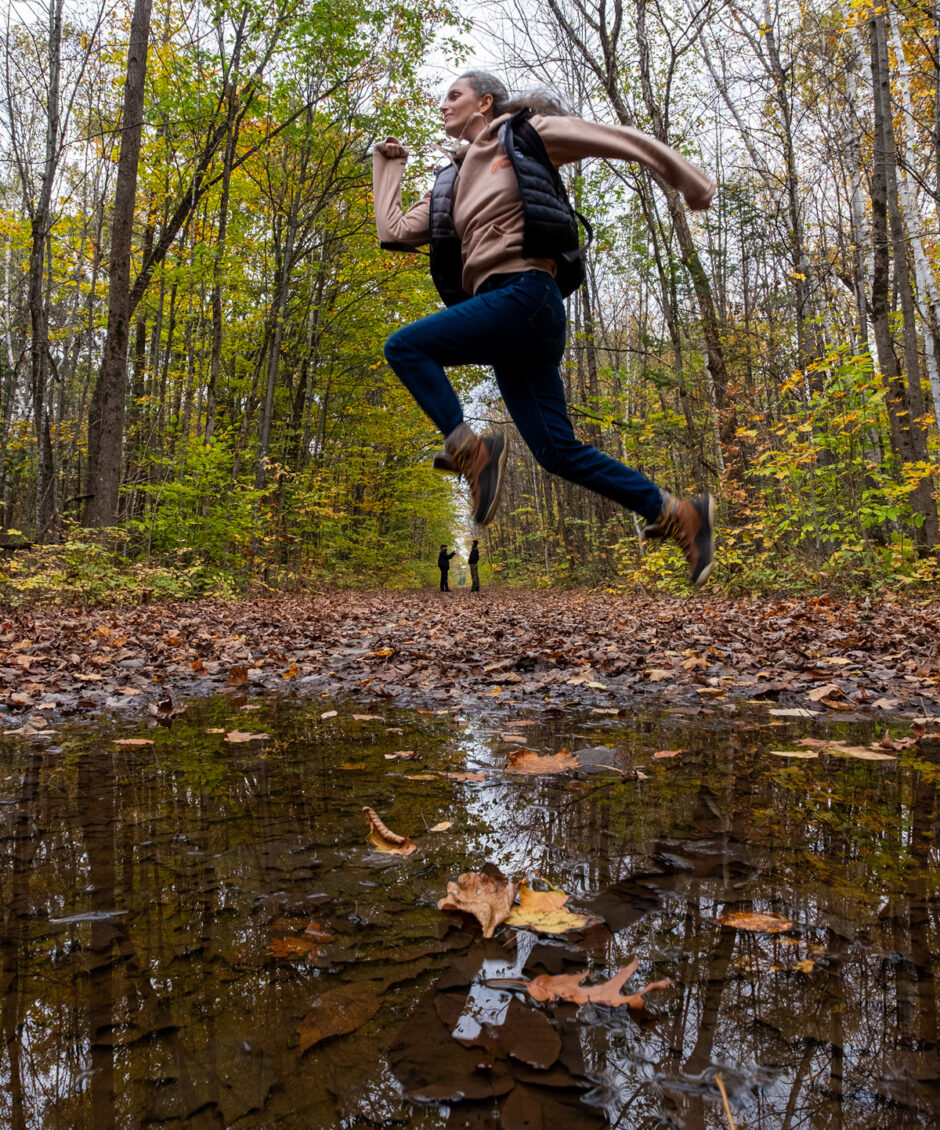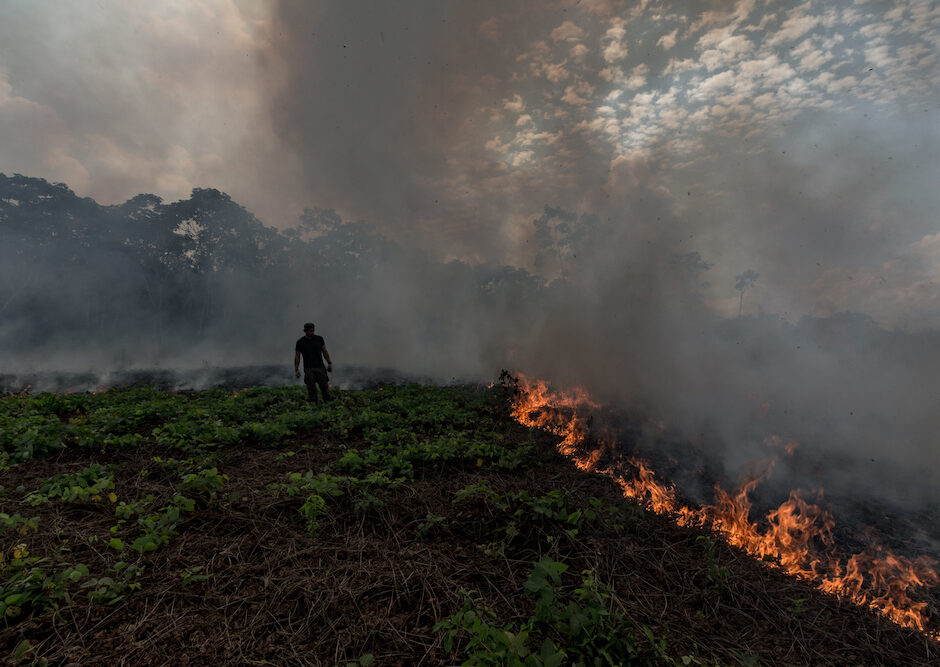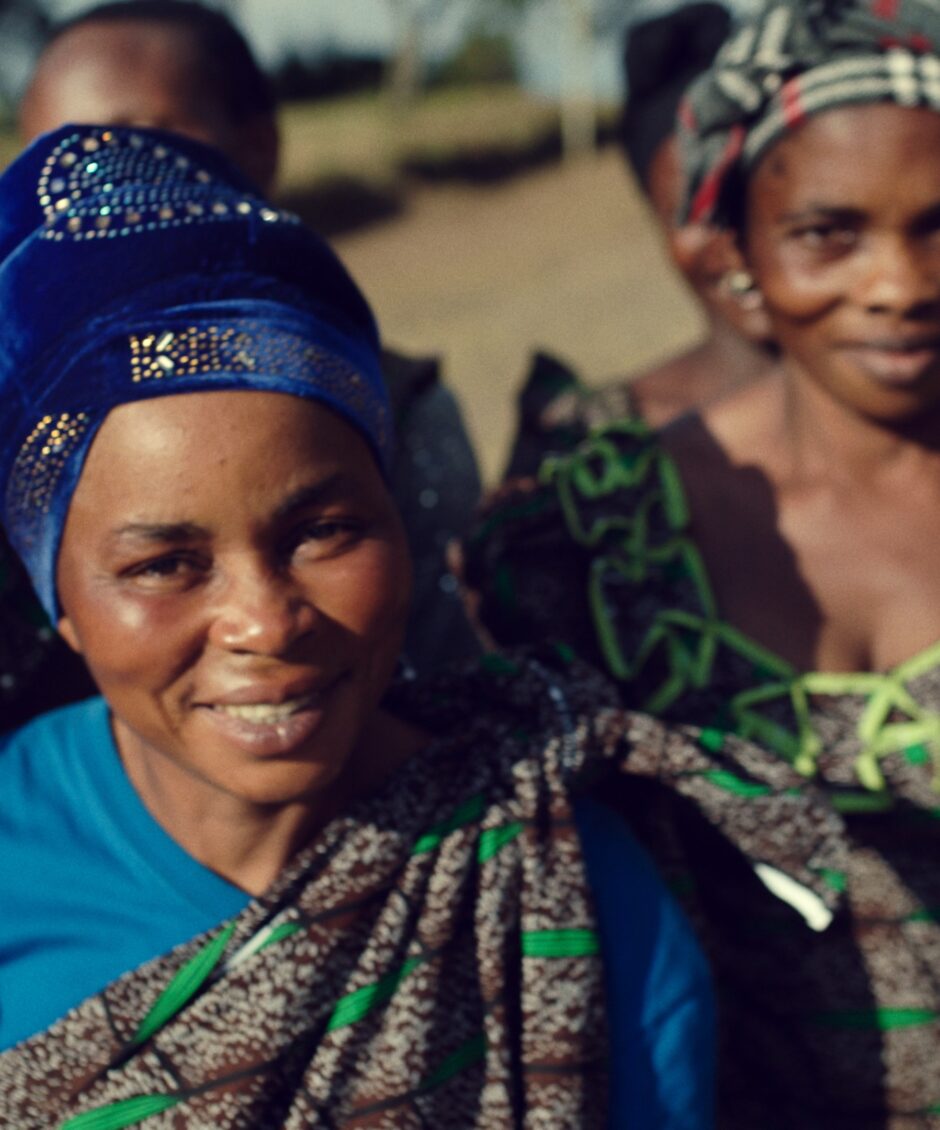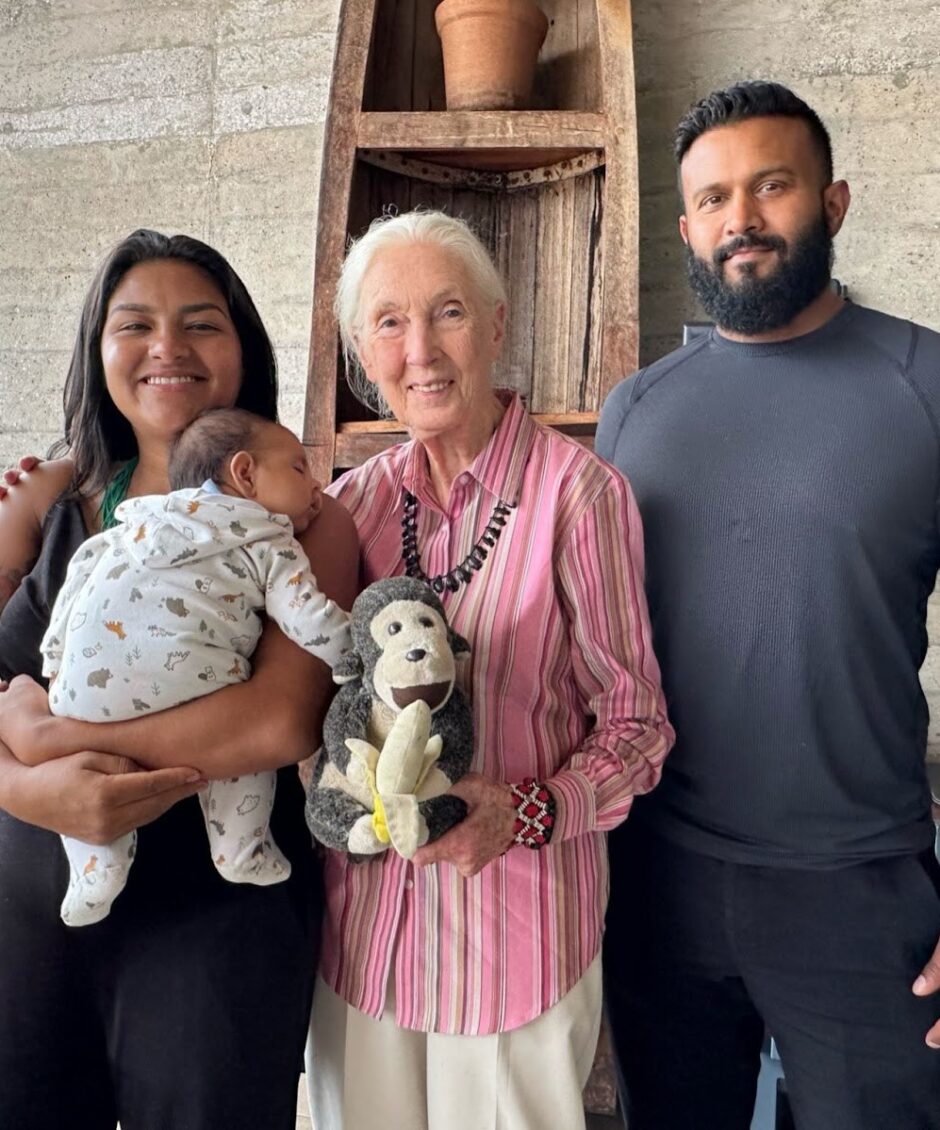When a Coastal Wetland Ecosystem Faced Development Threats, This Woman Stepped Up. Now She’s Leading Its Preservation Efforts.
Article
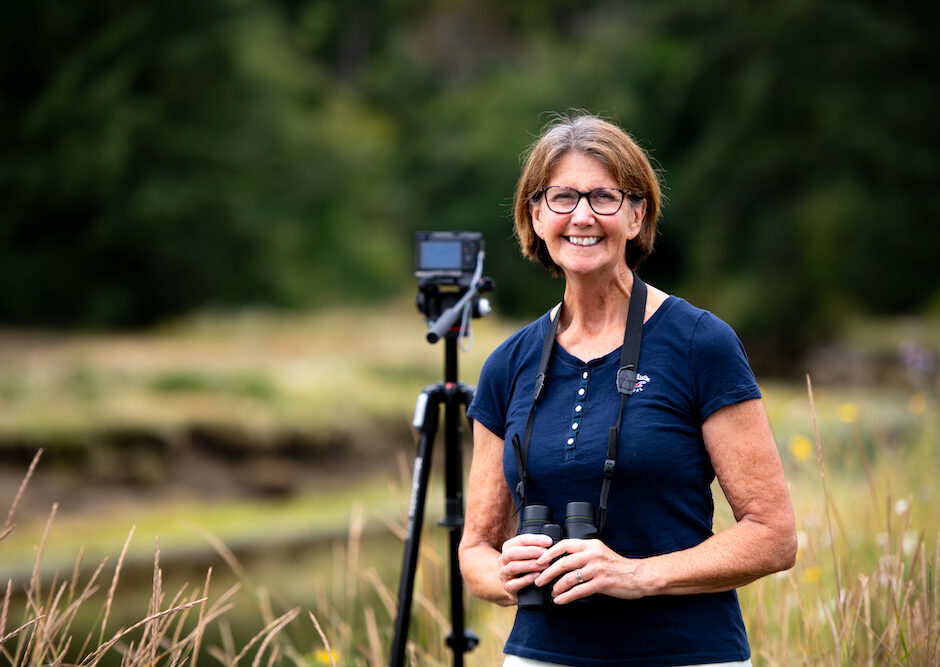
Denise Foster is on a mission to protect the unique French Creek Estuary, a vital coastal habitat that is home to bears, cougars, deer, and hundreds of bird species — including the majestic Bald Eagles.
Author
Sam Rose Phillips
Topics
“This is definitely my favourite place,” Denise says between heron squawks overhead. “You know, I’ve been to lots of places, but I’ve never known one as intimately as this.”
Denise’s ties to the French Creek Estuary are evident as she guides me away from the tideline and through the forest. She has a story for every step.
“You don’t realize, but about 80% of coastal species come to estuaries,” she says, scanning with her binoculars where the sea meets the stream. “We have bears and cougars visiting here, and deer constantly. Hundreds of bird species — land and sea birds and river birds. It’s phenomenal.”
Denise Foster is the Co-founder and Chair of the Save Estuary Land Society. In 2018, alongside her late life partner, Peter Giesen, she moved from Victoria to build a house around the corner from what’s now the French Creek Estuary Nature Preserve. They were told the forested area behind their home was a park. It was not. Privately owned, the twenty-three acres of ecologically sensitive land beside the French Creek estuary was at high risk of being developed, not just with single family homes, but multifamily buildings and condos.
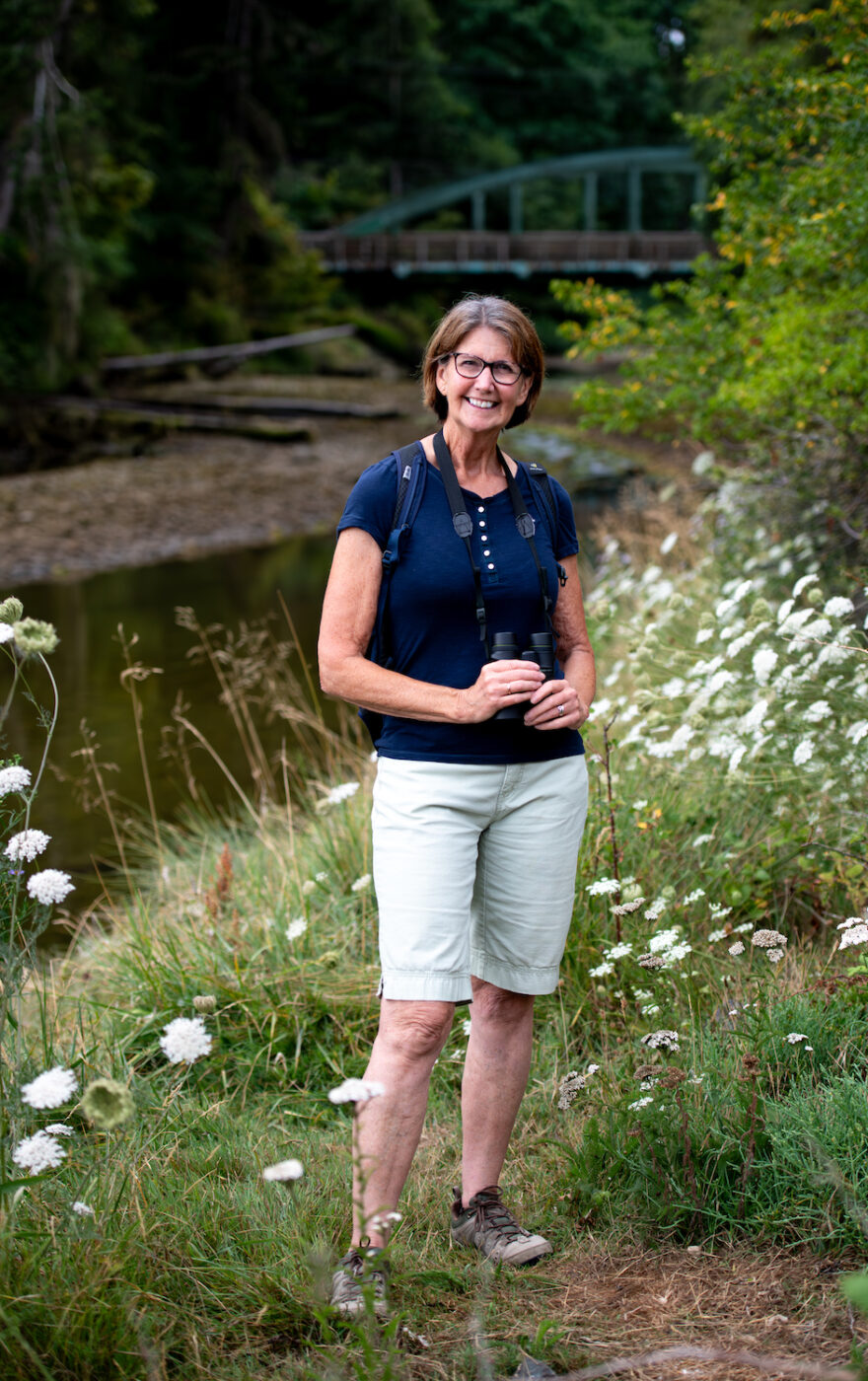
“Without areas like these, there’s such a loss of wildlife habitat and places for people to experience nature. Seeing it developed just wasn’t on our radar.”
It was then that Peter and Denise decided to begin their campaign to protect the estuary by preventing the logging of Coastal Douglas-fir forest, infilling of wetlands, and development construction. With three other keen community members as directors, they formed the Save Estuary Land Society.
While the mallards mingle with the gulls, the morning light rises across Denise’s face as she watches their movements quietly beside the creek. The heron behind her steps towards his breakfast with great patience and care.
“I’m a pretty positive person,” Denise volunteers. “And with a background in public recreation, I’ve seen amazing results when people come together around a common goal. And so we had to get a lot of people together to protect this land.”
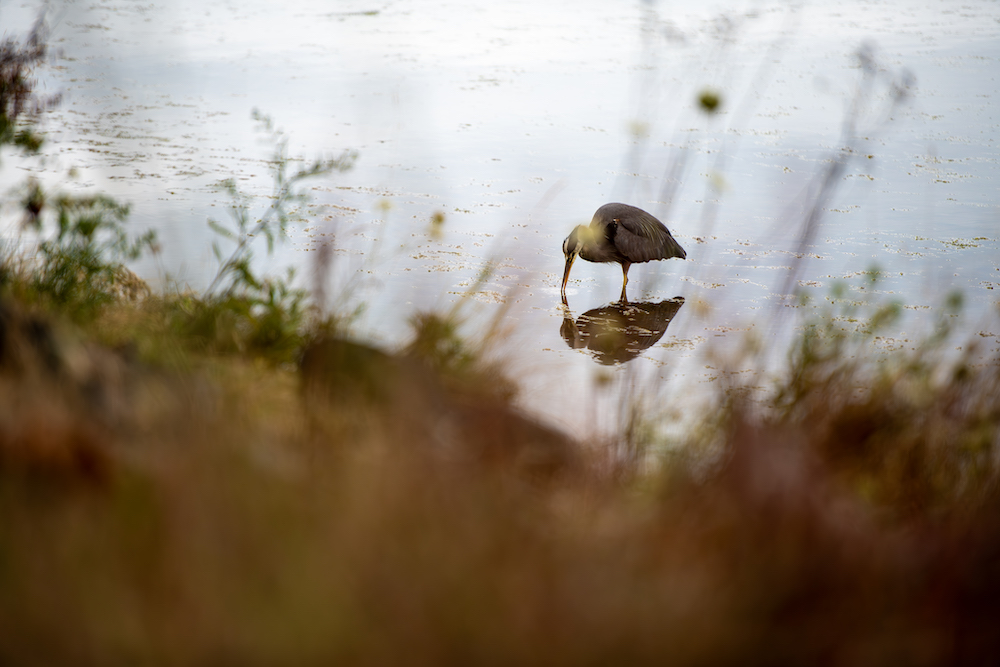
First, the Save Estuary Land Society set out to prove this to be a significant ecological area that needed to be protected. They gathered studies and biological assessments from over the years, finding funding through grassroots public education campaigns that included volunteers and directors going door to door selling raffle tickets in their local area.
Denise knew they were just getting started. She soon set out to raise the profile by involving as many other community groups as possible. Working alongside the Arrowsmith Naturalists, Friends of French Creek Conservation Society, Mid-Vancouver Island Habitat Enhancement Society and Vancouver Island University / Mount Arrowsmith Biosphere Region Research Institute, Denise reached out to the CEO of the BC Parks Foundation, Andy Day, for support in lifting their initiative off the ground. Andy reached out to Qualicum First Nation and Snaw-Naw-As First Nation to seek approval of the project, and then reached out to the property owner, French Creek House Ltd. and the Regional District of Nanaimo, to discuss collaboration.
She reminisces, “I’ll always remember Andy’s words: I look forward to doing exciting things together in 2022. Then, the magic happened. The BC Parks Foundation came on board and secured a donation of land value from the property owner, and brought Dax Dasilva and Age of Union on board with a million-dollar donation. This launched the crowdfunding campaign. And it was a whirlwind of wonder and success. I believe it was the bringing together of people that convinced the BC Parks Foundation this campaign would be successful.”
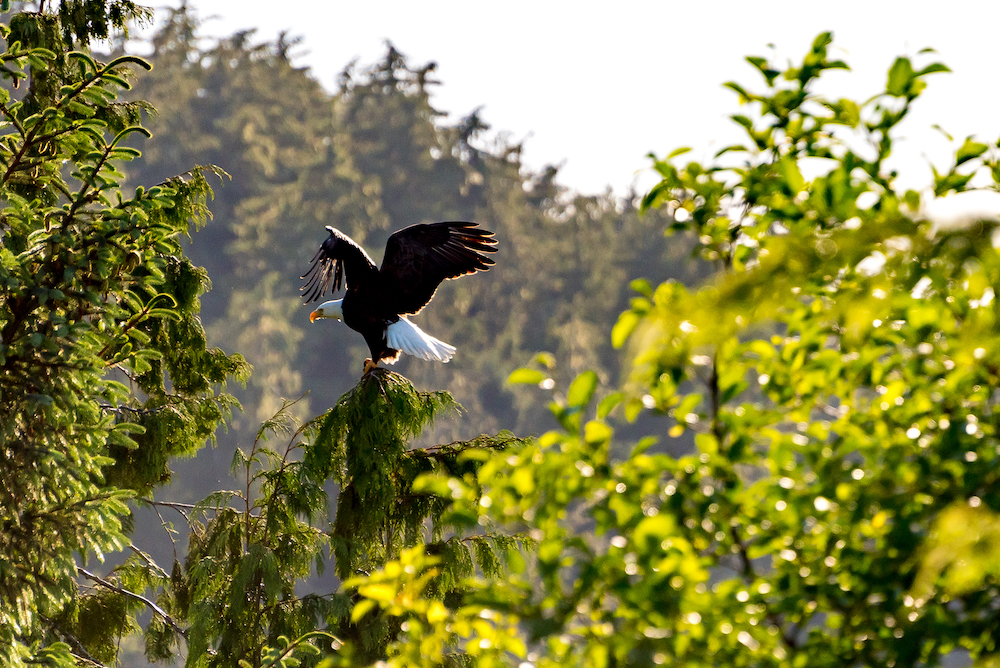
And it was. With crowdfunded donations coming in from across Vancouver Island, Canada, and beyond, the target goal was reached in time and the land conserved as the French Creek Estuary Nature Preserve.
Denise and representatives from local conservation groups and staff from VIU / MABRRI and the Regional District of Nanaimo are developing a ten year management plan to ensure the preservation and enhancement of the Nature Preserve’s biodiversity and the special, natural values of the area. Science-based studies of insects and aerial insectivores, a survey of plant communities and ways to “re-wild” the creek’s shoreline are already underway. These projects are led by experts in their fields and supported by local volunteers, one of whom discovered a rare moth.
As Denise tells me about each of these studies, I can’t help but notice her affinity for the eagles and herons here. Moving through the Preserve together, she notes the individuals and families calling overhead in a way that shows me they’re familiar to her. This is especially impressive as the French Creek Estuary is a primary destination and habitat for Bald Eagles. “At times, we have as many as 200 perched in the trees when there’s an abundance of really high-value food. It’s just one of those areas where everything connects for species to be able to find food.”
In 2023, the Save Estuary Land Society received a grant from the BC Parks Foundation to identify and monitor Bald Eagle and Great Blue Heron nests from Deep Bay to Nanoose. Fourty-five volunteers were out in the field collecting and recording data.
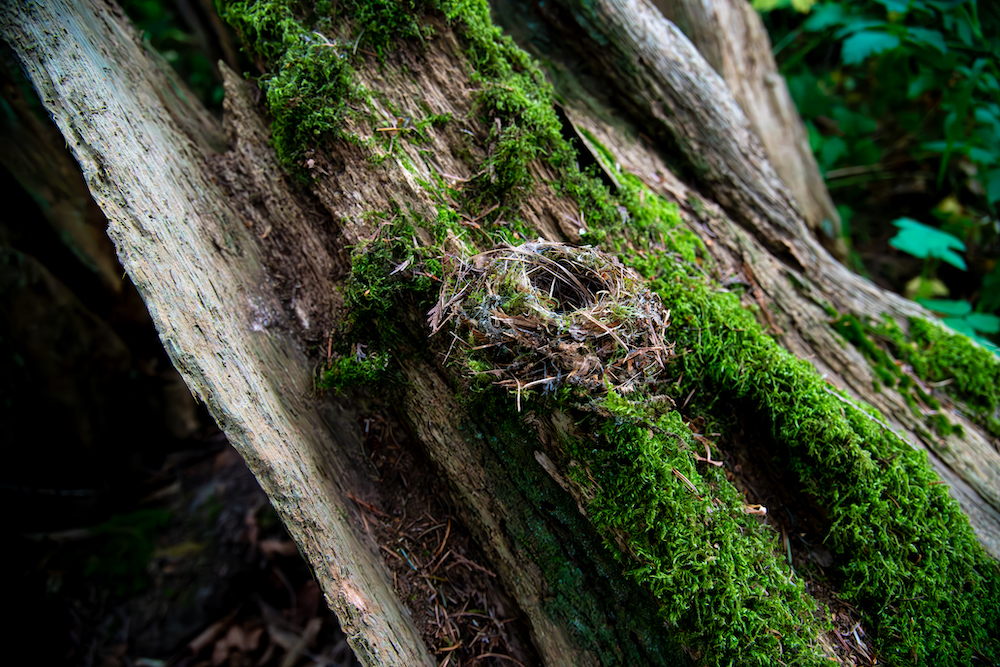
“We’ve received incredible photos and amazing reports about the success of eagle and heron nests and also some sad news. Great Blue Herons are a blue listed species at-risk. They’re such easily disturbed birds that it’s hard for them to find suitable nesting sites near food sources. The data from our project indicates far fewer active nesting sites located. We’ll be sharing this info with the province, which will hopefully strengthen the need to protect herons.”
As we near the end of our walk together, my ears perk towards a tall Douglas-fir tree about 100 metres away. Denise leads me to the edge of the preserve in silence while we listen to the loud clattering of five Great Blue Heron nestlings being fed by their parents. Denise whispers about another nest filled with young ones just a few trees away. She’s been observing these nests for months.
A smile stretches across her face, and maybe a trace of relief, as she watches the heron nestlings clumsily move about their branch.
These nests rest high in trees standing just outside of the preserve, on undeveloped, privately-owned land. “The herons are safe for the time being, but these trees could be taken down if a permit is issued by the Provincial ministry.” Denise says exactly what I thought she might, “So I’m hoping…thinking…wouldn’t it be great to add that additional small piece of privately-owned land to the preserve?”
Credits
Sam Rose Phillips
Topics
Article written by
Sam Rose Phillips
Sam Rose Phillips is a filmmaker, photographer, and writer based in Yuułuʔiłʔatḥ Territory, what is currently known as Ucluelet, British Columbia. She focuses her lens on human-wildlife stories and their cultural significance to coastal communities. Sam specializes in off-grid, remote storytelling both from land and on the water, spending the first 5 years of her career as a one-woman film crew. Framing narratives alongside collectives like Conservancy Hornby Island, Sea Shepherd, Stand, North Coast Cetacean Society, Clayoquot Action, and Cetus Research & Conservation Society, has instilled in her a dedication to integrating truth and hope into the same conversations. Her words, images, and films are published by Save Our Seas Magazine, Salty at Heart Journal, CBC’s The Wild Canadian Year, and Outdoor Photography Magazine. She is currently directing a documentary about coexisting with wildlife.
Related
articles
America, News, Project
Expansion of Protected Forest and Wetland in Quebec Marks a Milestone in Collaborative Conservation
America, Project, South America
How Age of Union Helped Save a Threatened Forest in the Peruvian Amazon
Africa, Explainer, Project
The Crucial Role of Women in Protecting the Congo’s Forests
Project
More articles
America, News, Project
Expansion of Protected Forest and Wetland in Quebec Marks a Milestone in Collaborative Conservation
America, Project, South America
How Age of Union Helped Save a Threatened Forest in the Peruvian Amazon
News
“Wildcat” Wins Emmy for Outstanding Nature Documentary, Co-Executive Produced by Age of Union
News
The Jane Goodall Legacy Foundation Welcomes Dax Dasilva to its Council for Hope, Goodall and Dasilva Travel to the Brazilian Amazon to Explore Partnerships with Indigenous Communities
Africa, Explainer, Project
